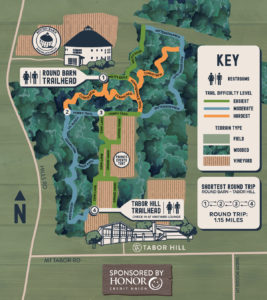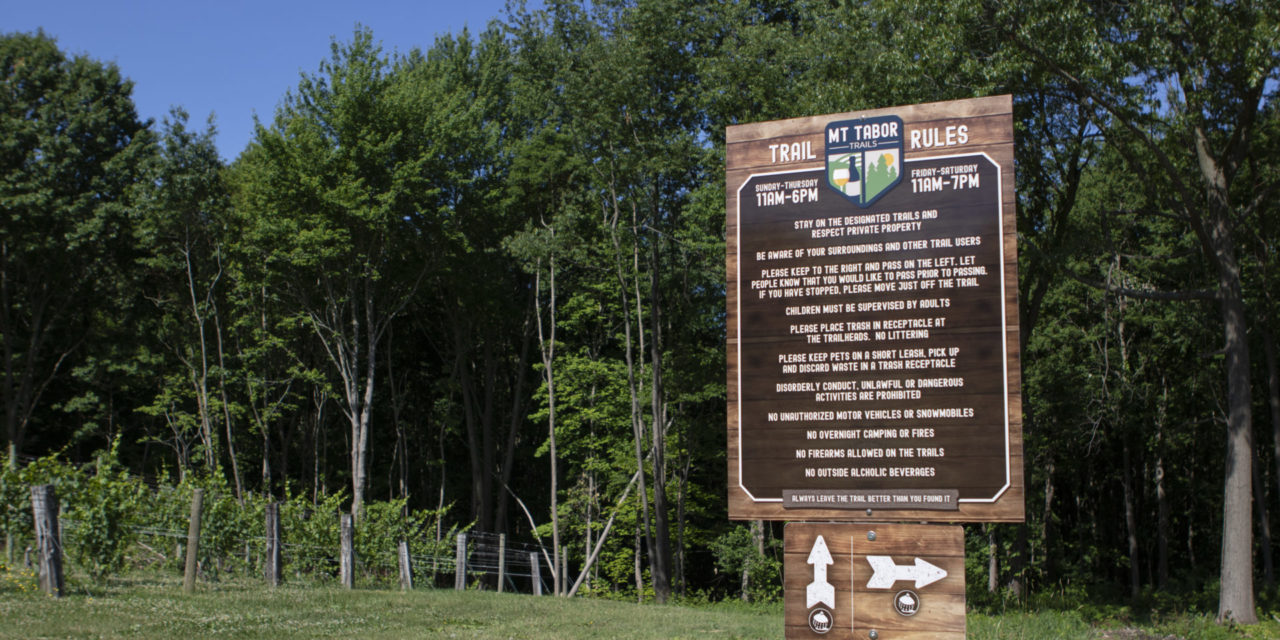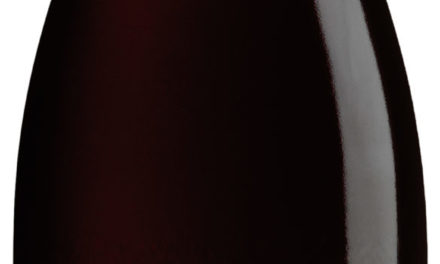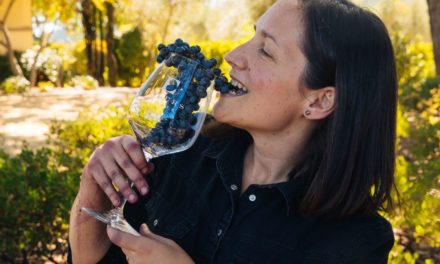Matt Moersch, whose Moersch Hospitality Group owns three wineries in southwest Michigan, remembers his exact reaction when the state locked itself down at the end of March 2020 in response to the pandemic.

“We knew people would get tired of sitting at home and would want to do something while staying safe.” —Matt Moersch, Moersch Hospitality Group
“It was a scary moment in my career. I was worried about the ‘unknown’: When was this shutdown going to end, how was this going to hurt the businesses, how was this going to affect my team members?” says CEO Moersch, whose properties include Round Barn Winery, Distillery & Brewery; Tabor Hill Winery & Restaurant; and Free Run Cellars in Southwest Michigan. “For us, it was a scramble into the unknown, and we had to completely redo our business model, week after week, month after month.”
Welcome to the brave new world of pandemic wine tourism, in which how much money people spend when they visit a winery isn’t the most important measurement of success. Rather, it’s about finding alternate streams of revenue, social distancing, and working with lenders. Not to mention keeping employees safe.
“It was all about innovation,” says Steve Warner, president of the Washington State Wine Commission, whose state has 1,000 wineries that typically attract 2.6 million visitors per year. “I know the word has been used a lot, but everyone had to ‘pivot’ from what they were doing almost overnight. We had to adjust marketing, because it’s [suddenly] not even about tourism. We all had to shift digital [strategies] and emphasize the idea of drinking locally—and let’s not forget online sales and curbside pickup.”
The good news is that, almost a year into the pandemic, the widely feared carnage among U.S. wineries largely hasn’t happened. Wineries adapted and made do. The bad news is, there’s no sign the next 12 months will be any easier, which means another year of adapting and making do.
Here’s how wineries across the country did just that.
Tackling Postponed Projects
One of the most difficult things about running a small business is finding time to get out from behind the cash register. Immediate needs always seem to take precedence over making time for something that might pay off later. Until a pandemic hits.
“I think a lot of wineries found that out,” agrees Warner. “Even if it was something as simple as updating the Facebook page. Businesses were able to things they knew they needed to do, but didn’t have the time for otherwise. Hopefully, they can continue with that level of innovation.”
At Jordan Vineyard & Winery in Sonoma County, Calif., for example, Director of Marketing and Communications Lisa Mattson says, “We’re using this time of decreased visitation as an opportunity.” The forced closure gave the winery time to complete remodeling projects on the building and grounds, including its Bacchus Courtyard, library, cellar room, and three guest suites. “All projects should be complete by spring 2021.”

Tabor Hill Trials [Courtesy Moersch Hospitality Group]
“We had plenty of time now and were able to get it done quickly,” says Moersch. “We knew people would get tired of sitting at home and would want to do something while staying safe. This was a way to provide that and to bring them safely back to enjoy the property—with social distancing guidelines.”
The result? Within a couple of weeks, a series of trails—easy, moderate, and difficult—covered fields, woods, and vineyards. Customers can access the trails at either the Round Barn Estate or Tabor Hill Winery & Restaurant (there is no charge to enjoy the trails), as well as food and drink at one of the wineries, bring their kids and pets, and stay for the day.
Delivery and Shipping
Paul Vandenberg co-owns Paradiso del Sol, a small winery in Washington’s Yakima Valley. Julie Kuhlken is the co-owner of Pedernales Cellars in the Texas Hill Country. For both, delivery and shipping is usually straightforward. But what happens when visitors can’t come? Delivery and shipping become all-important.
Vandenberg started delivering wine to his customers in Seattle, about three hours away. He sent out an email to his contact list, offering a case discount and home delivery. This way, he says, he sold 20 cases per trip—starting with once per month and graduating to weekly—a significant economic boost for a winery that makes about 1,200 cases per year. Typically, he says, he’d get about 10 cars per day in the off-season, when the pandemic closed the winery.
Kuhlken’s winery, which normally doesn’t ship during the brutal Texas summer (to protect wine quality), offered summer shipping, complete with ice packs, for orders delivered within Texas. There were increased costs, but it nonetheless helped make up for lost onsite business.
Zoom tastings
Known for innovative marketing and inventive customer outreach, Jordan Winery upped its game during shutdown by embracing online events. The key, says Mattson, is to “treat a Zoom tasting as you would any other winery event.”
We’ve all seen the TV commercial mocking a typical Zoom meeting, with a big head going, “Can you hear me?” Mattson says too many wineries may unintentionally be doing that.

It’s important to “treat a Zoom tasting as you would any other winery event.” —Lisa Mattson, Jordan Vineyard & Winery
Invest in proper production techniques, she advises, such as lighting the subject properly and resting a laptop at eye level so the host doesn’t have darkened and shadowed raccoon eyes. In addition, devise a run of the show—a schedule that says what will happen when during the Zoom tasting. Early in the shutdowns, viewers may have forgiven amateurish presentations. But as we’ve all experienced more of these events, an uneven production can make it more difficult to keep [consumers’] interest, which makes it more difficult to sell them wine. (See “Zoom-tastic,” Spirited November/December 2020.)
An Unlikely Ally
Perhaps one of the more surprising developments over the first nine months of the pandemic was the cooperation of so many state liquor authorities in facilitating work-arounds for local producers. Yes, there were problems with wineries classified as bars in some states, and menu requirements slowed the ability of some wineries to meet customer demand, but talk to state winery officials and there were more positives than many expected.
State authorities often worked with wineries to make sure local delivery and curbside pickup met legal requirements, even when the requirements were vague and unclear. Say those interviewed for this article, if a producer asked for help, they often got it.

“Businesses were able to things they knew they needed to do, but didn’t have the time for otherwise.” —Steve Warner, Washintgon State Wine Commission
“It was a pleasant surprise,” says Warner. “There were letdowns, of course, especially about phased re-openings. But [the regulatory board] seemed to be willing to give us the opportunities we needed.”
Restaurants also played a meaningful role.
There’s often a lack of understanding between restaurants and their local wineries, but those seemed to fall by the wayside during the pandemic, as each side of the equation recognized how much the other could help it survive.
Washington state’s wine commission set up a restaurant receipt discount program: Buy a takeout meal and get a discount on a local winery purchase. A variety of producers around the country worked with local chefs to offer dinners in a box—wine and food for one price—or created date-night specials. Says Warner, “That’s the kind of thing you’d like to see [continue] after the pandemic, where local works with local.”










